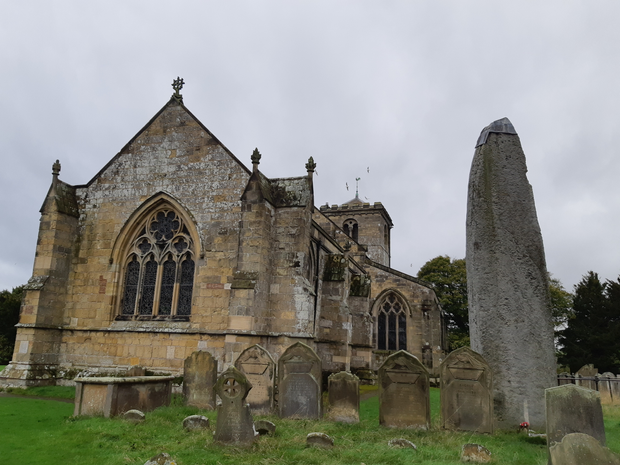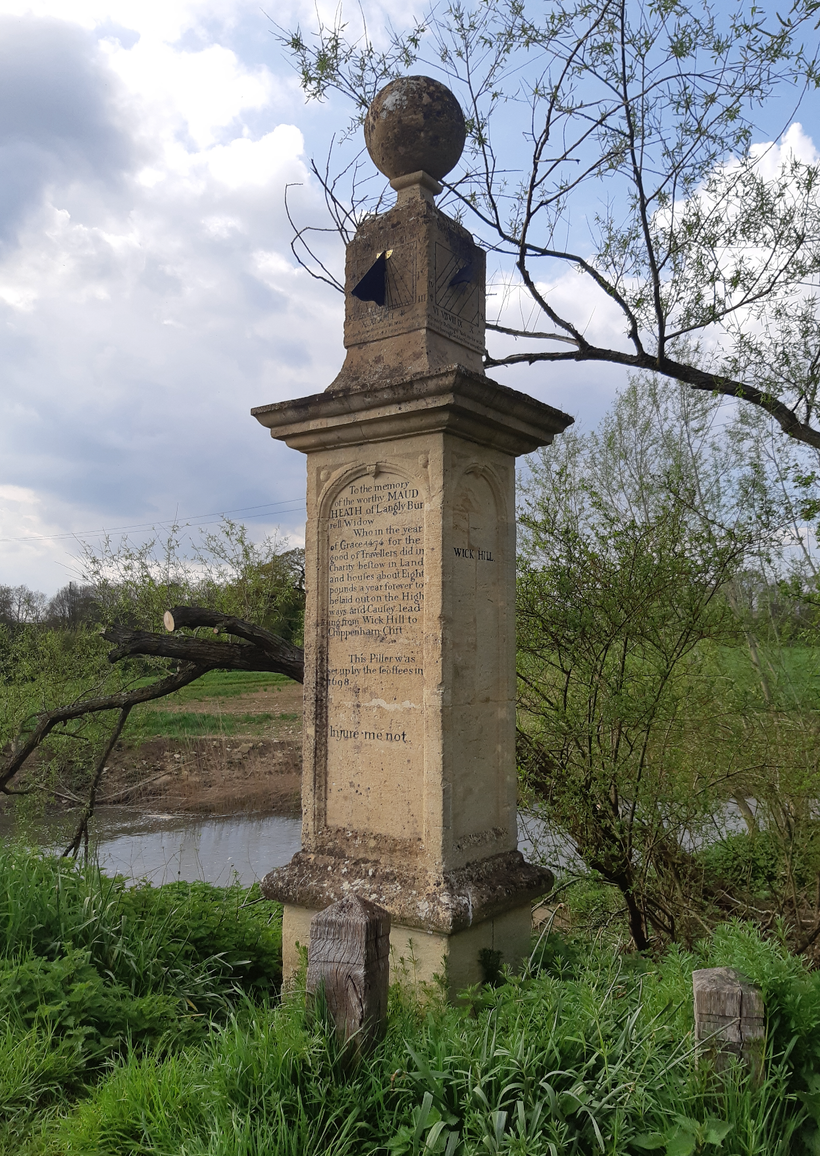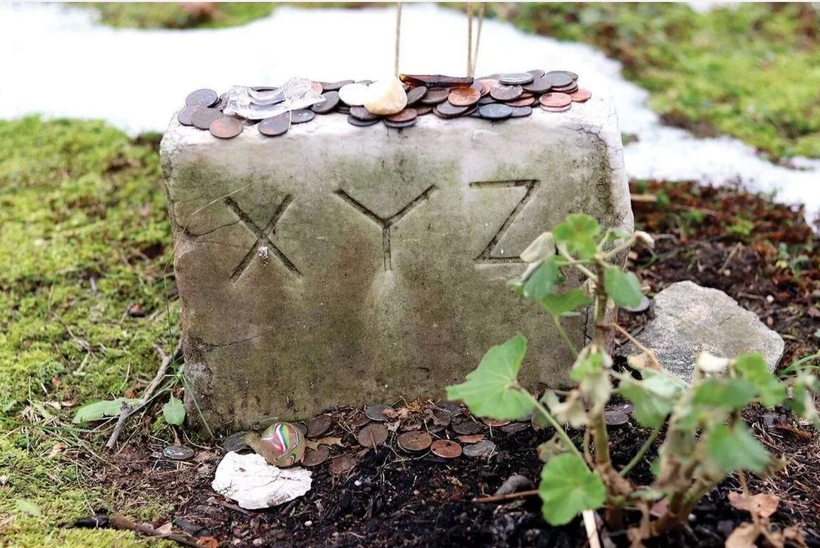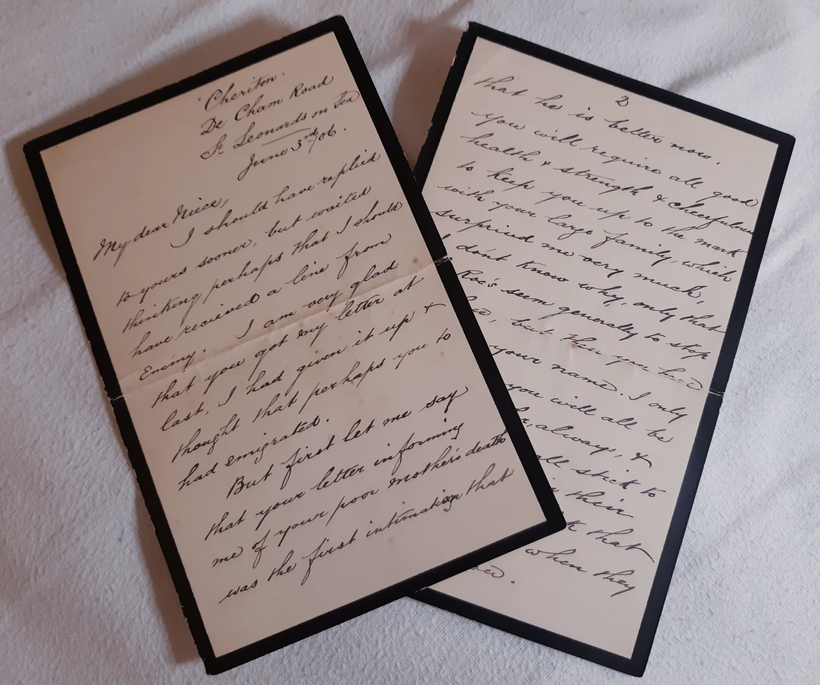Sitting in the metaphorical shadow of Avebury’s mystical stone circle is the little modest structure of St James’ Church. The church was built a short distance from the stones due to the Saxon’s distrust of the nearby henge and the hope that their Christian structure would counteract any latent evil.
A veritable mish-mash of styles and eras, the church holds a wealth of treasures and hidden histories. The earliest parts of the church date from around 1000AD and has retained its Saxon nave (later altered by the Normans), a pair of round-headed windows at ground level and four porthole windows on the upper level. Around these upper windows are rings of holes that originally held wattle rods, used in the church’s construction. Such architectural features are fascinating to the church historian, but are frequently and easily overlooked by visitors.
The church has been developed and expanded over the centuries, with aisles added in the 12th century, the chancel rebuilt in the 13th century and wider aisles installed in the 15th century, when the Norman south door was moved to its current position and a tower added for good measure. In the 19th century, the arcades were, sadly, replaced, but a few breadcrumbs remain of their original design. In the same era, the chancel underwent heavy restoration during which, two feet below the foundations, the earlier Saxon building was found.
One of the most fascinating features of Avebury is the 15th century rood screen. The loft remains, but the rood itself was destroyed, alongside most others across the country during the Reformation; a time when Britain’s architectural, religious, cultural and historical treasures were lost to the whims of the monarchy. During the reformation, ‘abused images’, being likenesses, paintings and statues used in places of worship were regarded as idolatrous, superstitious and in need of removal, repainting, whitewashing or simple destruction. As such, no complete rood screen remains in England, with a handful preserved in ancient Welsh churches. In 1561, the full rood at Avebury that had survived waves of destruction was removed and destroyed under the command of Elizabeth I. However, the screen remained. Local history records that some bold parishioners took the screen apart and hid the deconstructed timbers behind a false wall in the nave. Such a blatant disregard for a royal decree would have resulted in certain death had they been discovered. It was in the false wall that the screen languished until its accidental discovery in 1810. Throughout 1878-84, the screen was re-installed and the loft restored and repainted, returning part of the church to its original splendour.
Avebury’s font is no shallow basin but a huge late Saxon or Norman tub font. The size was a deliberate practical feature, as it was used for the full-body immersion of the infant, rather than the gentle sprinkling of water on the forehead that we’re used to seeing.
The carved design of the font can be separated into two halves and covers the whole circumference. Believed to be from the 12thcentury the top half depicts two curled serpents or dragons (often thought to represent sin and evil) looking at a bishop, or Christ, depending on who you ask, holding a crozier, or hooked staff. The bottom section features a repetitive pattern of columns, described as ‘blind arcading’ by Great English Churches. The overall design is crude, but so striking.
Outside, the churchyard is still in use and is primarily filled with standard 19th century headstones. Following the side road, slightly away from the church (but still in its grounds) and opposite Avebury Manor is a gated memorial, which contains the Jenner family vault. Leopold Christian Duncan Jenner (1869-1953) was the fifth son of Sir William Jenner, first baronet and physician to Queen Victoria; quite the title! He was also an accomplished athlete, winning the Army fencing championship in 1895 and countless Polo competitions.
When WWI came around, he re-joined the Army and served in Egypt, Gallipoli and France when he was made a C.M.G. and received the honour of the Order of the Crown of Roumania. Following the conflict, he retired from the army as a lieutenant-colonel and settled in Avebury Manor with his family.
Leopold married the equally fascinating Nora Helen Gertrude Stewart. In 1894, Nora’s first marriage collapsed after three years and the divorce was played out across the nation’s newspapers. However, in 1899 she and Leopold married and they were to have a long and happy life together, with Nora enjoying many freedoms not afforded to most women of her social standing. As explained by Avebury Manor, ‘Nora’s new found freedom from a domineering father and a marriage of subordination emancipated her. She drove her own car, was an active supporter of the suffragette movement; she was very much her own woman, positively encouraged by Leopold.’[1]
During their time together at Avebury Manor, they took it upon themselves to restore the building to its earlier splendour, building the manor up from a partially-derelict shell into the magnificent house it is today. The last addition was made in the 1920s, when a library (now a National Trust tearoom) was built to house the Colonel’s enormous library. After the war, their finances were sadly in tatters and by 1935, the Manor was leased to Alexander Keiller, a marmalade tycoon, who went on to buy it outright in 1937.
The Colonel was quite the local character in his time, walking his dalmatians through the village every day, shouting and waving his stick at any tourists that dare peer onto his property form the henge’s ditch. Despite this, the couple were popular in the community, allowing the village to hold fetes and a yearly Christmas pantomime where Nora took it upon herself to make many costumes.
Nora and the Colonel spent their later years in Bath where Nora would die on February 4th1952. Leopold would die a few days shy of his eighty fourth birthday on 20thOctober 1953. As was their wish, their bodies were returned to Avebury and were buried at St James. On the memorial plaque, barely legible through the moss and weathering, sits the beautiful and earnest epitaph from Leopold to Nora: ’She was in all things the most perfect wife and companion a man ever had.’

Nora and the Colonel spent their later years in Bath where Nora would die on February 4th 1952. Leopold would die a few days shy of his eighty fourth birthday on 20thOctober 1953. As was their wish, their bodies were returned to Avebury and were buried at St James. On the memorial plaque, barely legible through the moss and weathering, sits the beautiful and earnest epitaph from Leopold to Nora: ’She was in all things the most perfect wife and companion a man ever had.’
***
Liked this post? Then why not join the Patreon clubhouse? From as little as £1 a month, you’ll get access to four brand new posts every week (articles, pictures, videos, audio) and full access to all content before that! Loads of exclusive stuff goes on Patreon, never to be seen on the main site. Pop on over, support my work, have a chat and let me show you my skulls…
www.patreon.com/burialsandbeyond
***
References/Further Reading:
http://www.greatenglishchurches.co.uk/html/avebury.html
http://aveburymanor.blogspot.com/2012/09/leopold-jenner-1869-1953.html
https://www.britainexpress.com/counties/wiltshire/churches/avebury.htm
[1] Avebury Manor














Leave a comment